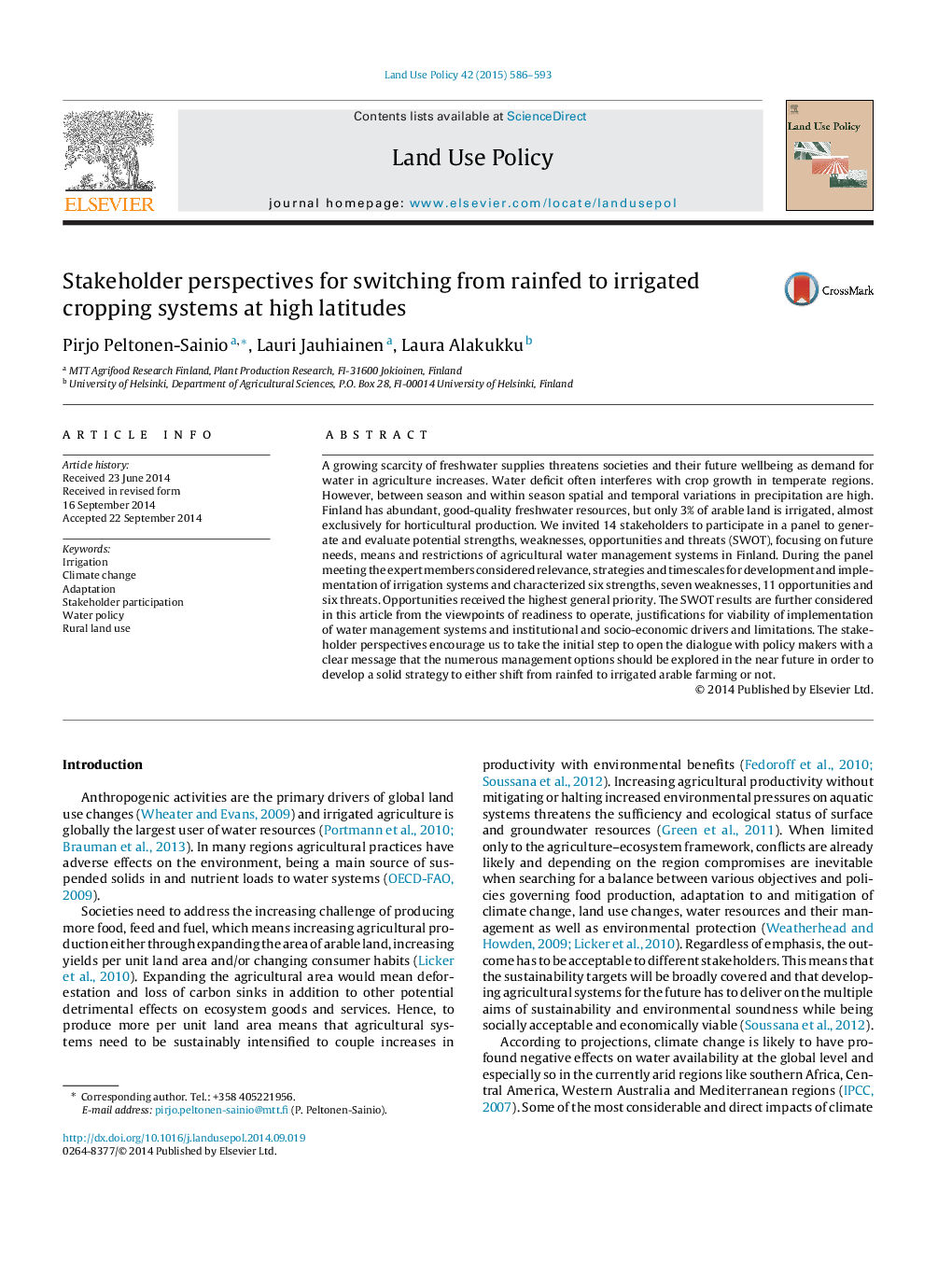| Article ID | Journal | Published Year | Pages | File Type |
|---|---|---|---|---|
| 6548471 | Land Use Policy | 2015 | 8 Pages |
Abstract
A growing scarcity of freshwater supplies threatens societies and their future wellbeing as demand for water in agriculture increases. Water deficit often interferes with crop growth in temperate regions. However, between season and within season spatial and temporal variations in precipitation are high. Finland has abundant, good-quality freshwater resources, but only 3% of arable land is irrigated, almost exclusively for horticultural production. We invited 14 stakeholders to participate in a panel to generate and evaluate potential strengths, weaknesses, opportunities and threats (SWOT), focusing on future needs, means and restrictions of agricultural water management systems in Finland. During the panel meeting the expert members considered relevance, strategies and timescales for development and implementation of irrigation systems and characterized six strengths, seven weaknesses, 11 opportunities and six threats. Opportunities received the highest general priority. The SWOT results are further considered in this article from the viewpoints of readiness to operate, justifications for viability of implementation of water management systems and institutional and socio-economic drivers and limitations. The stakeholder perspectives encourage us to take the initial step to open the dialogue with policy makers with a clear message that the numerous management options should be explored in the near future in order to develop a solid strategy to either shift from rainfed to irrigated arable farming or not.
Related Topics
Life Sciences
Agricultural and Biological Sciences
Forestry
Authors
Pirjo Peltonen-Sainio, Lauri Jauhiainen, Laura Alakukku,
